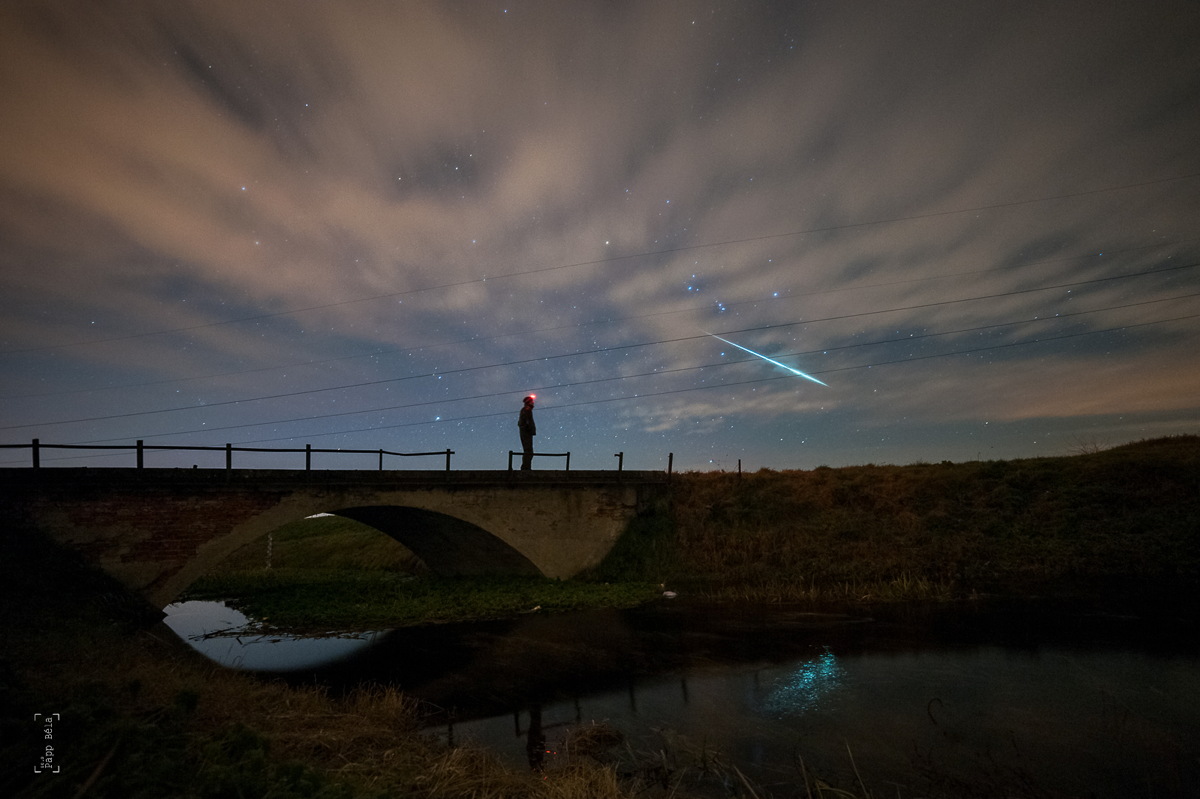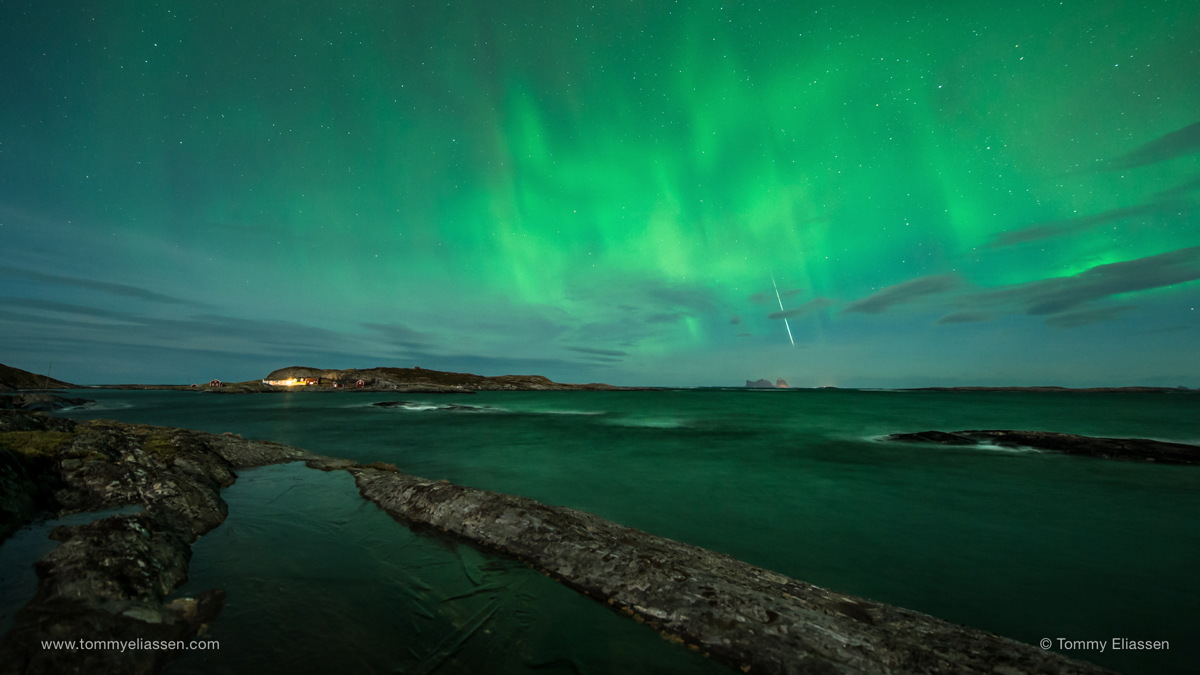Geminid Meteor Shower Wows Skywatchers Around the World (Photos)
The Geminid meteor shower amazed skywatchers willing to brave the cold to catch the annual display this weekend.
Some intrepid observers managed to capture some incredible pictures of the streaking meteors in clear skies around the world, with NASA recording video of the 2014 Geminids as well. Although the bright moon could have washed out the display for many people, skywatchers still caught parts of the peaking shower. Stargazers from Macedonia, Australia, the United States and other countries caught sight of the bright, slow meteors that are typical of the Geminids each year.
"Some [meteors] were so bright they are visible even with the moon nearby and through the clouds," astrophotographer Maxim Senin told Space.com of his view of the meteor shower from Redondo Beach, California. [See more photos of the 2014 Geminid meteor shower]

The Geminid meteor shower occurs each year when Earth passes through a cloud of debris created by the extinct comet 3200 Phaethon. They appear to emanate from the constellation Gemini, giving this shower its name. Skywatchers first observed the Geminids sometime in the mid-1800s, according to NASA.
Previous studies of the Geminids have shown that this shower plays host to plenty of bright meteors and many faint ones, according to Space.com skywatching columnist Joe Rao.
"Because Geminid meteoroids are several times denser than the comet dust that supplies most meteor showers, and because of the relatively slow speed with which the Geminids encounter Earth (22 miles or 35 kilometers per second), these meteors appear to linger a bit longer in view than most," Rao wrote in a Geminid skywatching preview. "As compared to an Orionid or Leonid meteor that can whiz across your line of sight in less than a second, a Geminid meteor moves only about half as fast."
Even this stargazer, who lives in a light-polluted part of the United States, got a chance to see some bright meteors during the weekend display. In about 40 minutes of stargazing in Boston, I saw 10 to 15 bright meteors streak overhead from just outside the heart of the city on Saturday (Dec. 13) night.
Get the Space.com Newsletter
Breaking space news, the latest updates on rocket launches, skywatching events and more!

While it's nice when people in light-polluted areas can see a meteor shower, getting outside of the city for a display like the Geminids is usually preferable. One incredible photo, from photographer Tommy Eliassen, shows a Geminid meteor that appears to fly through the green, glowing northern lights in Lovund, Norway, on the night of Dec. 12.
But interested observers usually don't need to go too far to find a dark area where they can see plenty of meteors.
"I drove 30 minutes out of town to get away from the lights, and what a difference" that made, photographer Tyler Leavitt of Las Vegas told Space.com via email. Leavitt's photos show the sky peppered with stars, while bright meteors streak overhead.
Editor's Note: If you captured an amazing photo of the Geminid meteor shower or any other skywatching image you'd like to share for a possible story or image gallery, please contact managing editor Tariq Malik at spacephotos@space.com.
Follow Miriam Kramer @mirikramer. Follow us @Spacedotcom, Facebook and Google+. Original article on Space.com.
Join our Space Forums to keep talking space on the latest missions, night sky and more! And if you have a news tip, correction or comment, let us know at: community@space.com.

Miriam Kramer joined Space.com as a Staff Writer in December 2012. Since then, she has floated in weightlessness on a zero-gravity flight, felt the pull of 4-Gs in a trainer aircraft and watched rockets soar into space from Florida and Virginia. She also served as Space.com's lead space entertainment reporter, and enjoys all aspects of space news, astronomy and commercial spaceflight. Miriam has also presented space stories during live interviews with Fox News and other TV and radio outlets. She originally hails from Knoxville, Tennessee where she and her family would take trips to dark spots on the outskirts of town to watch meteor showers every year. She loves to travel and one day hopes to see the northern lights in person. Miriam is currently a space reporter with Axios, writing the Axios Space newsletter. You can follow Miriam on Twitter.









